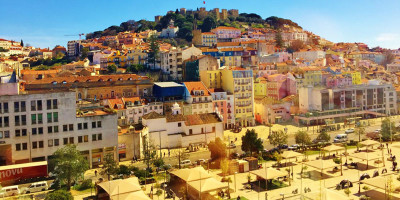
Image: Wikimedia Comms by Unknown
The Most Beautiful Small Seaside Towns in Japan
However regularly connected with winter sports, climbing, and Sapporo Beer, Hokkaido is home to the absolute most stunning seaside towns and oceanside towns in Japan.
While swimming is normally impossible external the mid-year season, these memorable towns and curious towns merit putting on a colder time of year coat for.
In this article, we talk about the most lovely little shoreline towns in Japan.
1. Karuizawa
Karuizawa is an enchanting hotel town tucked underneath the monumental Mt. Asama, one of Honshū’s most dynamic volcanoes. Just an hour from Tokyo by fast train, it’s a famous road trip from the capital, drawing in local people and vacationers the same with its exquisite harvest time leaf tones and cooler summer temperatures.
Head Akihito met his future lady, Empress Michiko, in Karuizawa in 1957, powering the town’s standing as a heartfelt retreat. It’s a fantastic spot for climbing and visiting natural aquifers, in addition to Yacht-no-more, or Wild Bird Forest which is home to more than 60 different bird species.
2. Otaru

Otaru Canal Night. by Unknown. Wikimedia Comms
At the point when Japan’s northernmost prefecture, Hokkaido, was colonized in the late nineteenth hundred years, little Otaru turned into a significant fishing port. Afterwards, the terminal station of Hokkaido’s most memorable rail route line was worked here.
The town’s curious waterway is fixed with old stockrooms and, alongside the remainder of the prefecture, it’s perhaps the most renowned spot in Japan to appreciate new fish.
Albeit the waterway region can become busy with Japanese travellers, you’ll find calmer areas spotted with dignified herring manors towards the focal point of the town. The town is especially gorgeous during the Otaru Snow Gleaming Festival in February when the channel is fixed with sparkling snow lamps.
3. Kamakura
When a significant political focus, Kamakura is once in a while nicknamed the ‘Kyoto of Eastern Japan’ for its exceptionally old Buddhist sanctuaries, Shinto places of worship, old wooden homes, and verifiable landmarks. Lining the coast and encompassed by moving timberland scenes, Kamakura’s normal landscape fills in as a sensational setting for these delightful strict locales.
As well as visiting the town’s noteworthy attractions, its slopes offer various wonderful climbing trails. The town is especially well known throughout the late spring months, drawing in swarms with its sandy sea shores and loosened-up environment. Found under an hour south of Tokyo, it’s a simple and compensating road trip from the capital.
4. Nara

Ukimidou by Sho Horiuchi. Wikimedia Comms
With a set of experiences as Japan’s most memorable super durable capital and home to eight UNESCO World Heritage Sites, Nara is one of the country’s most socially rich towns.
Even though Nara just filled in as Japan’s capital for something like 70 years, it was during those years that the nation’s craft, writing, and culture formed into the practices connected with Japan today. Found under an hour from Kyoto and Osaka, Nara is a superbly minimal town, with the greater part of its noteworthy attractions found in beautiful Nara Park.
Beside sanctuaries, the recreation area is known for its populace of curious, free-wandering deer. The most great element is the Todaiji Temple, a tremendous wooden structure that houses one of Japan’s biggest bronze sculptures of Buddha.
5. Hida-Takayama
Hida-Takayama is nicknamed ‘Little Kyoto’ for its overflow of hallowed places, sanctuaries and beautiful eighteenth-century structures. Enjoyably confined by the encompassing Hida Mountains, the town overflows outdated Japanese appeal.
These transcending mountains ignore a scene of riverside markets, customary shops, and Japanese-style hotels. San-machi Suji road is the core of the city’s architecturally significant area, fixed with old, dull wood structures entered through blue Noren draperies.
The limited roads are lined by little trenches of running water, frequently still utilized — as in hundreds of years past — for washing garments and eliminating winter snow. The town is known for its brilliant purpose, with distilleries being recognized by enormous cedar balls dangling from their passageways.
6. Kagoshima

Image: Wikimedia Comms by Unknown
With its warm environment, active local people and rich vegetation, it’s not difficult to see the reason why Kagoshima is a sister city to Naples. The capital of Kagoshima Prefecture and one of Kyushu’s southernmost urban communities, alluring Kagoshima is specked with palm trees, wide roads and blossoms.
The city’s striking inlet looks onto Sakurajima, a functioning fountain of liquid magma that seems to ascend from the waters off the coast. The view is especially astounding from July to August when light shows happen over the sound each night. The fountain of liquid magma’s continuous ejections frequently covers the town in a strange covering of white debris.
7. Hakone
Found under 100 kilometres (62 miles) away from Tokyo, Hakone can be a fantastic difference in pace from the capital. Part of the Fuji-Hakone-Izu National Park, Hakone offers a marvellous scene of mountains, lakes, and climbing trails.
The feature is Ashino-ko, a lake with incredible perspectives on neighbouring Mount Fuji and the torii door of the Hakone-jinja, which ascends from the water to cause the ideal Japanese situation.
The town is likewise known for its incredible onsen (underground aquifers), conventional Japanese motels and workmanship historical centres. Even though Hakone can be visited on a road trip from Tokyo, it merits going through the evening.
8. Furano
Furano is a little city in the focal point of Hokkaido, known for its tenderly moving farmland vistas. July is the most famous season to visit when the town’s fields bloom with an ocean of purple lavender. Popular Farm Tomita is at the core of the activity, selling lavender-mixed items in its bistro and gift shop, including lavender frozen yoghurt.
Similarly lovely are the vivid occasional blossoms that sweep the ranch and encompassing scene, which is suggestive of Dutch tulip fields. Throughout the colder time of year, Furano is one of the country’s most famous downhill and cross country skiing objections, known for its great, fine snow.
9. Kanazawa
Kanazawa was perhaps the biggest city in Japan to be saved from bombarding strikes during World War II and, subsequently, many pieces of its old town stay in salvageable shape today. Kanazawa’s restricted roads go through old samurai and geisha areas, passing Edo-period channels, lovely sanctuaries, and present-day historical centres.
The city is maybe most popular as the home of seventeenth-century Kenrokuen Garden, which is broadly viewed as quite possibly the most shocking nursery in the country. Despite its numerous notable attractions, Kanazawa isn’t trapped previously — it’s a lively, current town that likewise offers brilliant shopping and eating.
10. Magome
Magome is a post town in the Kiso Valley, which once filled in as a significant visit point for Edo-period voyagers making the long excursion between Tokyo and Kyoto along the Nakasendo Trail. The town’s central avenue, a wide stone walkway fixed with delightfully updated old structures, is shut to vehicular traffic.
Besides respecting pretty engineering, the fundamental motivation to visit Magome is to climb the Magome-Tsumago Trail, a five-mile segment of the Nakasendo Trail. This wonderful path twists through timberlands and farmland and passes cascades, before finishing off with the similarly beautiful town of Tsumago.
The path is very much set apart in English and transport goes between the two towns for the people who don’t want to stroll back to Magome in the wake of finishing the climb.

 English
English











